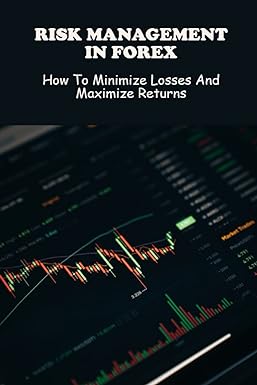Question
I- The risk-free rate on T-bills recently was 1.23%. If the real rate of interest is estimated to be 0.80%, what was the expected level
I- The risk-free rate on T-bills recently was 1.23%. If the real rate of interest is estimated to be 0.80%, what was the expected level of inflation?
II- Recently, the annual inflation rate measured by the Consumer Price Index (CPI) was forecast to be 3.3%. How could a T-bill have had a negative real rate of return over the same period? How could it have had a zero real rate of return? What minimum rate of return must the T-bill have earned to meet your requirement of a 2% real rate of return?
III- Calculate the risk premium for each of the following rating classes of long-term securities, assuming that the yield to maturity (YTM) for comparable Treasuries is 4.51%.
| Rating class
| Nominal interest rate |
| AAA | 5.12% |
| BBB | 5.78% |
| B | 7.82% |
IV- You have two assets and must calculate their values today based on their different payment streams and appropriate required returns. Asset 1 has a required return of 15% and will produce a stream of $500 at the end of each year indefinitely. Asset 2 has a required return of 10% and will produce an end-of-year cash flow of $1,200 in the first year, $1,500 in the second year, and $850 in its third and final year.
V- Carl Foster, a trainee at an investment banking firm, is trying to get an idea of what real rate of return investors are expecting in todays marketplace. He has looked up the rate paid on 3-month U.S. Treasury bills and found it to be 5.5%. He has decided to use the rate of change in the Consumer Price Index as a proxy for the inflationary expectations of investors. That annualized rate now stands at 3%. On the basis of the information that Carl has collected, what estimate can he make of the real rate of return?
VI- Zane Perelli currently has $100 that he can spend today on polo shirts costing $25 each. Alternatively, he could invest the $100 in a risk-free U.S. Treasury security that is expected to earn a 9% nominal rate of interest. The consensus forecast of leading economists is a 5% rate of inflation over the coming year.
a) How many polo shirts can Zane purchase today?
b) How much money will Zane have at the end of 1 year if he forgoes purchasing the polo shirts today?
c) How much would you expect the polo shirts to cost at the end of 1 year in light of the expected inflation?
d) Use your findings in parts b and c to determine how many polo shirts (fractions are OK) Zane can purchase at the end of 1 year. In percentage terms, how many more or fewer polo shirts can Zane buy at the end of 1 year?
e) What is Zanes real rate of return over the year? How is it related to the percentage change in Zanes buying power found in part d? Explain
Step by Step Solution
There are 3 Steps involved in it
Step: 1

Get Instant Access to Expert-Tailored Solutions
See step-by-step solutions with expert insights and AI powered tools for academic success
Step: 2

Step: 3

Ace Your Homework with AI
Get the answers you need in no time with our AI-driven, step-by-step assistance
Get Started


